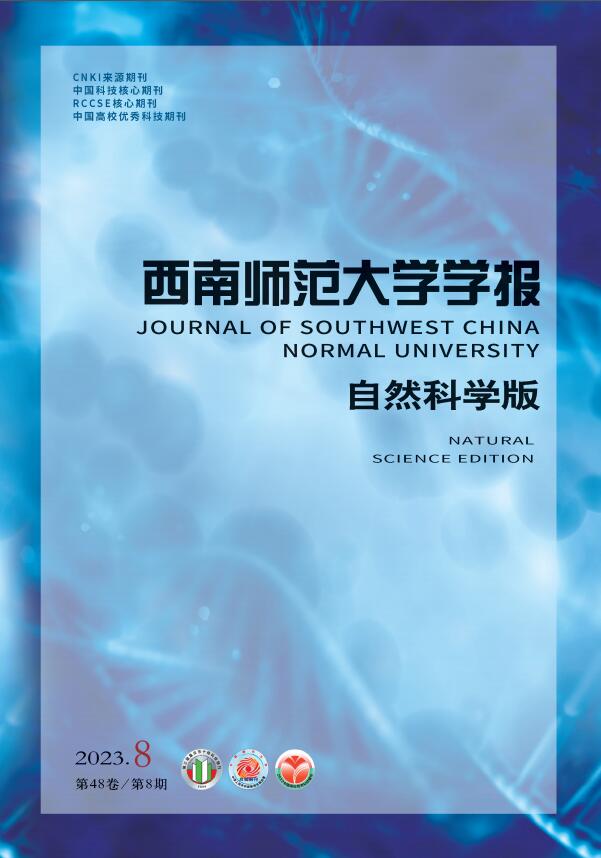-
本文研究以下半线性时间分数阶σ-发展方程的柯西问题:
其中α∈(0,1),σ≥1,γ∈(0,1),p>1,ε充分小. ∂t1+αu为1+α阶Caputo型分数阶导数,定义为
这里
为Riemann-Liouville型积分,Γ(β)为Gamma函数. 算子(-Δ)σ定义为
上述时间分数阶σ-发展方程(1)在物理学、力学和其他应用科学中有着大量应用[1-3],通常用于刻画具有幂律变特性的粘弹性介质中机械波的传播问题,也可描述介于扩散和波传播模型的中间现象,且这种现象通常发生在粘弹性介质中,融合了表现波传播的类固体材料和支持扩散过程类流体材料的特性,近年来关于该类方程解的适定性研究引起了不少研究者的关注[4-7].
注意到非线性项有如下性质
进而有
因此,当指数γ→1-且参数α,σ取极限情形时,本文所研究的非线性记忆项的柯西问题(1)可转化为非线性项为|u|p的经典问题. 探讨问题(1)与经典柯西问题解的性质之间的联系是一件很有意义的事情.
当α=0,σ=1,γ=1时,问题(1)转化为如下半线性热传导方程的柯西问题:
文献[8]给出了其临界指数
$\tilde{p}=1+\frac{2}{n}$ ,即在p>$\tilde{p}$ 时该问题在小初值情况下存在整体解,1 < p≤$\tilde{p}$ 时该问题的解在有限时刻爆破. 对于超临界与次临界的情形,文献[8]分别进行了解的整体存在性与爆破证明,对于临界的情形,文献[9-10]研究了解的爆破情况.当α=0,σ=1,γ∈(0,1)时,问题(1)则转化为如下带记忆项半线性热传导方程的柯西问题:
文献[11]证明了在
时解在有限时刻爆破,并证明了p>på时小初值情况下存在整体解,此处
可以看到当γ→1-时,此时的临界指数与Fujita临界指数一致.
当α=1,σ=1,γ=1时,问题(1)转化为如下半线性波动方程的双初值问题:
文献[12]在
和p>1,n=1时证明了解在有限时刻爆破. 根据Strauss猜想[13],问题(3)的临界指数p0(n)为二次方程
的正根,并且在n≥2,p>p0(n)时,问题(3)在小初值情况下存在整体解,在p≤p0(n)时问题(3)的解在有限时刻爆破. 文献[14-16]在超临界情况下针对不同空间维数证明了整体解的存在性,文献[17-18]在临界情况下、文献[19-20]在次临界情况下分别针对不同空间维数证明了解的有限时刻爆破.
对于时间分数阶方程,当α∈(0,1),σ=1,γ=1时,问题(1)转化为如下时间分数阶扩散-波动方程的柯西问题:
文献[4]得到了在小初值情况下,u1=0及u1≠0时该问题的两个临界指数,分别为
当α→0+时,
$\tilde{p} \rightarrow 1+\frac{2}{n}$ 为Fujita临界指数,当α→1-时$\bar{p} \rightarrow 1+\frac{2}{n-1}$ ,这与文献[12]所得到的指数相对应.文献[6]证明了当小初值
$u_0 \in L^1\left(\mathbb{R}^n\right) \cap L^{\infty}\left(\mathbb{R}^n\right)$ 且指数满足时问题(1)存在唯一整体解. 那么在1 < p≤pc时,问题(1)的解又有怎样的性质呢?本文拟通过构造合适的测试函数,在1 < p < pc与p=pc的情形下于不同空间维数中分别证明解在有限时刻爆破,并得到生命跨度上界的估计. 下面给出本文主要结论.
定理1 当α∈(0,1),σ≥1,γ∈(0,1)时,假设初值
$u_0 \in L^1\left(\mathbb{R}^n\right) \cap L^{2}\left(\mathbb{R}^n\right)$ 且满足若
则问题(1)的解在有限时刻爆破. 且在
$p<1+\frac{2 \sigma(2+\alpha-\gamma)}{(1+\alpha) n}<p_c$ 时,可以得到t∈[0,T]时问题(1)生命跨度的上界估计其中
C是与ε无关的正常数.
注1 考虑次临界情形p < pc. 当α→0+,σ=1,γ→1-时,
$p_c \rightarrow 1+\frac{2}{n}$ 为Fujita临界指数,此时要求空间维数n≥1;当α→1-,σ=1,γ→1-时有$p_c \rightarrow 1+\frac{2}{n-1}$ ,这与文献[12]所得到的指数相对应,此时要求空间维数n≥2.考虑临界情形p=pc. 可以看到此时γ不能太靠近1,当α→1-,σ=1时有
$p_c \rightarrow 1+\frac{4-2 \gamma}{n-2+2 \gamma}$ ,这与文献[11]所得到的临界指数一致.定义1[21](Riemann-Liouville型分数阶积分) 令T>0,f∈L1(0,T),α∈(0,1)阶左侧与右侧Riemann-Liouville型分数阶积分分别定义为
与
此处Γ(α)为伽马函数.
定义2[21](Riemann-Liouville型分数阶导数) 令T>0,f∈AC[0,T],α∈(0,1)阶左侧与右侧Riemann-Liouville型分数阶导数分别定义为
与
对于以上微积分定义,有如下性质成立:
命题1[21] 令T>0,α∈(0,1),若f∈Jt|Tα(Lp(0,T)),g∈J0|tα(Lq(0,T)),则以下分部积分成立:
其中
与
此处要求
命题2[22] 令T>0,α∈(0,1),则对任意f∈Lr(0,T),1≤r≤∞,等式
在t∈(0,T)上几乎处处成立.
引理1[23] 令
$\langle x\rangle=\left(1+|x|^2\right)^{\frac{1}{2}}$ ,设$m \in \mathbb{N}, s \in[0, 1)$ ,则对$\forall q>n$ 以及$x \in \mathbb{R}^n$ ,有如下不等式成立:此处f∧g表示存在一正常数C,满足f≤Cg.
引理2[23] 令σ≥1,记φ=φ(x)=〈x〉-q,q>0. 对于任意R>0,定义φR为
则(-Δ)σ(φR)满足以下伸缩变换性质
在证明爆破之前,通过Caputo型分数阶导数的定义(2)及分部积分公式(6),先给出问题(1)弱解的定义.
定义3 令p>1,T>0,u0∈L2(
$\in \mathbb{R}^n$ ). 若函数且对任意测试函数φR(x)∈H2σ(
$\in \mathbb{R}^n$ ),φ(t)∈C2([0,T]),有则称u是问题(1)的局部弱解. 若T=∞,则称u是问题(1)的整体弱解.
现在引入测试函数
$\varphi(t)=D_{t \mid T}^{1-\gamma} \tilde{\varphi}(t) \text {, 其中 } \tilde{\varphi}(t)=\omega(t)^\beta$ ,β足够大,关于此测试函数,有
且有如下求导性质:
引理3[22] 令T>0,α∈(0,1),β>α,对任意t∈[0,T],存在C=C(α,β),有
以及
定理1的证明
引入测试函数
在
$\in \mathbb{R}^n$ 上可积. 这里[σ]为σ的取整. 由引理1,可以看出对
$\forall \sigma$ ≥1,有现将测试函数
$\varphi_{\mathbb{R}}$ 和φ带入(7)式中,有记ΦR(x,t)=
$\varphi_R(x) \tilde{\varphi}(t)$ ,由命题1、命题2以及引理3,可得现假设u(x,t)为问题(1)的整体解,令
$I_R=\int_0^T \int_{R^n}|u|^p {\mathit{{\mathit{\Phi}}}}_R(x, t) \mathrm{d} x \mathrm{~d} t$ ,下面分别建立I1和I2的估计,以及
从而有
此处p'为p的共轭指数,即
$\frac{1}{p}+\frac{1}{p^{\prime}}=1 \text {. 令 } R=T^{\frac{1+\alpha}{2 \sigma}}$ ,由Young不等式可得此处取
$\theta \in\left(0, \frac{1}{C^{\prime}}\right)$ ,进而有由(5)式,当且当p < pc时有
令T→∞,可以推出
故u=0,这与假设(4)矛盾,所以问题(1)在次临界条件下不存在整体解.
当p=pc时,有
此时令
由(8)式及Young不等式可得
当K足够大时,由(5)式可以推出
同样产生了矛盾,故问题(1)在临界条件下不存在整体解.
由(9)式可知
当
$p<1+\frac{2 \sigma(2+\alpha-\gamma)}{(1+\alpha) n}<p_c$ 时即可得到此时生命跨度的上界估计其中
C是与ε无关的正常数.
Blow-Up for a Class of Semilinear Time Fractional Order σ-Development Equation with Memory Term
- Received Date: 23/06/2022
- Available Online: 20/02/2023
-
Key words:
- time-fractional order σ-development equation /
- Cauchy problem /
- memory term /
- test function method /
- blow-up
Abstract: The blow-up of a class of semilinear time-fractional order σ-development equation solutions with memory terms is studied. By constructing a suitable test function, the finite time blow-up of the solution is proved when the index of the nonlinear term satisfies certain conditions and the upper bound estimate of the life span is obtained, and the range of the obtained index is consistent with the classical blow-up conclusion in the limit case.






 DownLoad:
DownLoad: